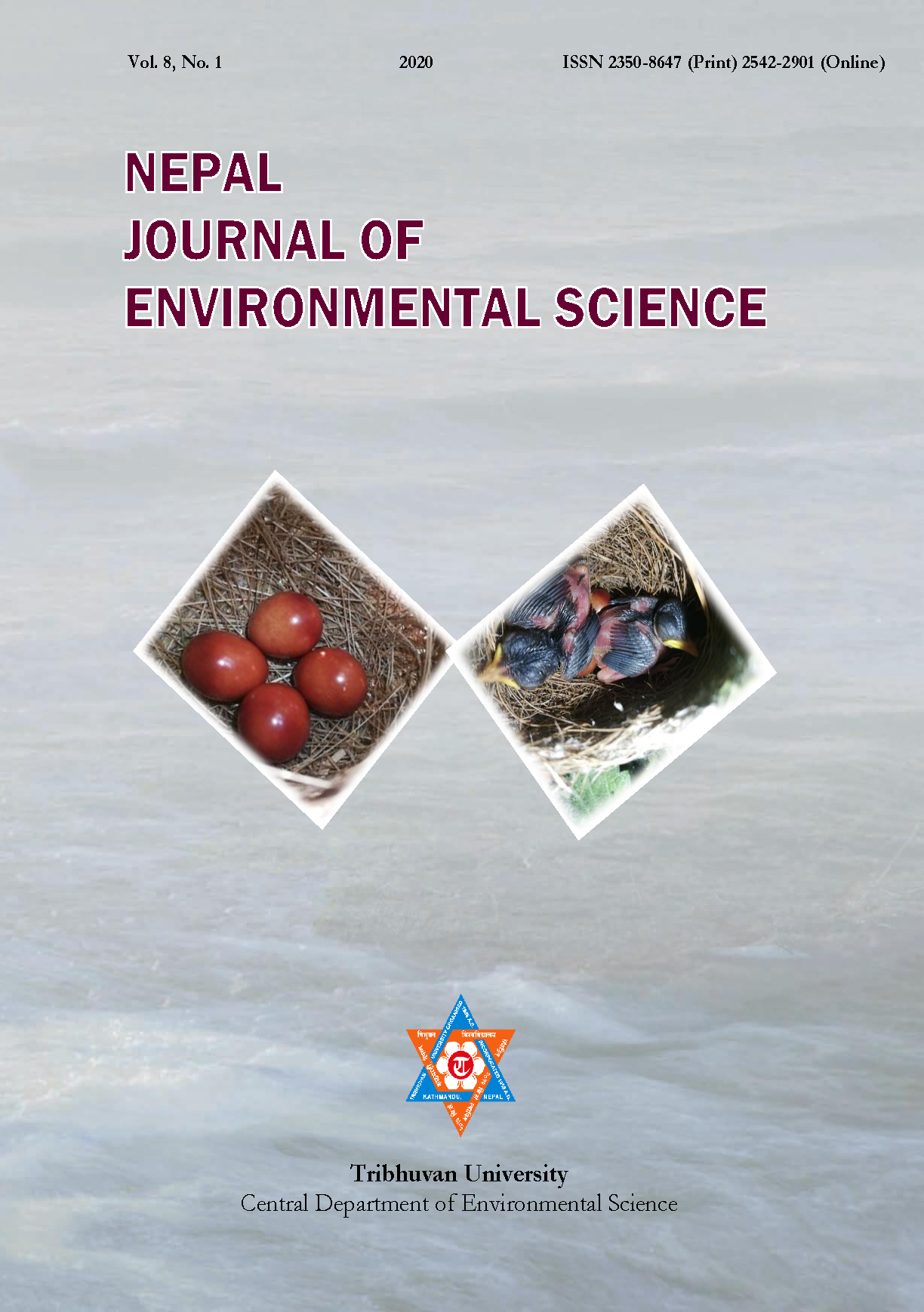First results on physico-chemical status and bathymetry of lakes in Ramaroshan Wetland, Far-West Nepal
DOI:
https://doi.org/10.3126/njes.v8i1.34464Keywords:
Bathymetry, far-western region, Nepal, Ramaroshan Lake Complex Area, water qualityAbstract
This study investigates the bathymetry of three major lakes and the water quality of nine lakes at Ramaroshan Lake Complex Area (RLCA), Far-Western Nepal. Lakes were surveyed based on line transects using Echosounder (depth measuring gauge) and GPS to collect the data for bathymetry. Water samples were collected from 43 sites of nine lakes, considering the land use patterns, anthropogenic activities, inlets, and outlets. Twenty physico-chemical parameters were analyzed to know the water characteristics and pollution level. The bathymetry map showed that Jingale is the deepest lake (44 m), followed by Batula (15 m) and Mathillo Dhaune (9.5 m). There was no significant spatial variability in the concentration of physicochemical parameters among the sampling sites. The mean concentrations of cations and anions were in the order of Ca2+> Mg2+> Na+> K+, and HCO3-> Cl-> SO42-> PO42-> NO3-, respectively. Principal component analysis (PCA) and cluster analysis (CA) techniques were applied to assess the influence of pollution levels and their controlling mechanism. PCA showed 79.89 % of the cumulative variance with > 1.26 Eigenvalue. Similarly, CA showed that Jingale Lake (in cluster 2) sites were less polluted than other sampling sites. Piper diagram concluded that there was a dominance of mixed water type belonging to Ca-Mg-Cl compared to Ca-HCO3. Furthermore, the Water Quality Index (WQI) value of the lakes in the study area was 27 indicating good water quality (slightly polluted).
Downloads
Downloads
Published
How to Cite
Issue
Section
License
This license enables reusers to distribute, remix, adapt, and build upon the material in any medium or format for noncommercial purposes only, and only so long as attribution is given to the creator.

